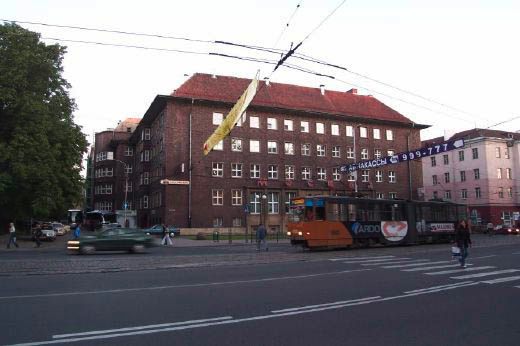
just some impression from a one week trip in June 2006 to north Eastern-Prussia, today as Kaliningradskaja Oblast part of Russia.
( at the moment most links will lead to pages in German language but the pictures need no language)
We stayed in Königsberg/ Kaliningrad in the Hotel Moskwa, opposite of the Zoo entrance in the north western part of town. In this area still a lot of pre -1945 buildings can be found.

From here most parts of the town are in easy walking distance or can be reached by buses or tram.
Starting from Hotel Moskva we went by bus to 5 organised cycling trips in various parts of the district. The one free day we used for a trip to the far east, the county of Pillkallen (Schloßberg) . There, in Groß-Schorellen (Saratovskoe) and Doblendszen we wanted to look for the roots of a part of the family.
The cycling trips were in the following parts of the district (some links still have to be made):
to the Curonian Spit (Kurshskaja Kosa)
from Kreuzingen (Skaisgirren, Bolshakovo) to Tilsit ( Sovetsk).
and finally some pictures from Königsberg / Kaliningrad
a (german) travel guide to be recomended is:
Gunnar Strunz: Königsberg Entdecken - Zwischen Memel und Frischem Haff, Trescher Verlag, Berlin 2006
(quite detailed in the whole district)
One final remark about placenames:
As in most parts of the world exact spelling of placenames has changed over the centuries but it is much more complicated in eastern Prussia. "Original" names were given by the early inhabitants of most parts of the area, the Pruzians ( a baltic nation like the Lithuanians or Latvians with a baltic language now extinct), German or Lithuanian settlers. The changes over time were gradual. Then in 1938 most names not "germanic" enough were changed to in most cases completely new german names. When at the end of WW this part of Germany was occupied by the Soviet Army and then divided into a soviet northern and polish southern part placenames in the northern part first were converted into russian letters.Then in 1946 again those towns and villages which were still populated got new, in most cases completely different russian names ( rivers and becks names are still qiute similar to the pre 1938 names) Also in the part now belonging to Poland most placenames were changed to a polish version ( in many cases with a recocnisable similarity to the old names). The other difficulty is that german and english transcription of russian letters into latin letters do differ in detail. But an internet search will usually lead to tables whith most versions of placenames.
Back to Kay' homepage
Version of 26.9.2006